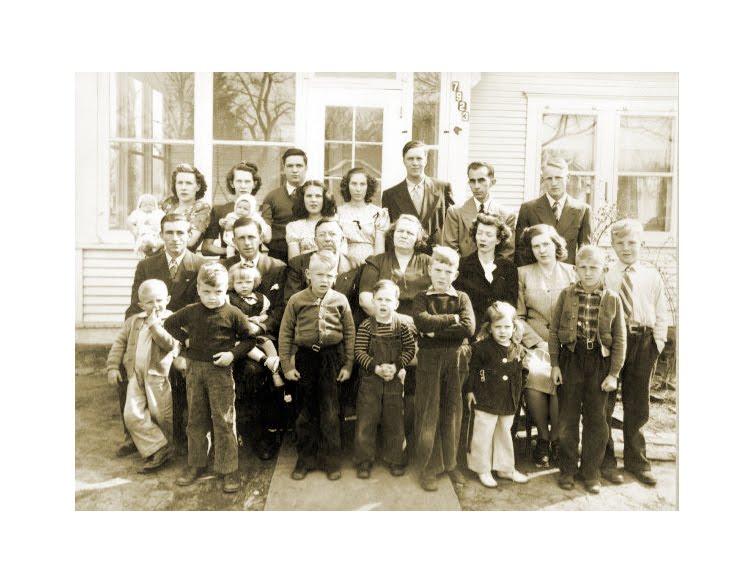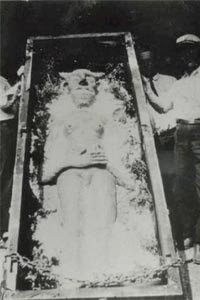James Stuart was a descendant of royal Stuart family of Scotland.
Vincenth Fry’s wife’s maiden name was Moss. He was born near Salisbury, North Carolina in Rowan Co. of German descent. Rowan Co. has since been divided into 30 counties, some are in VA and TN as well as NC. Their children were David, Peter, Daniel, Wm., James, Hannah, Emira, Elizabeth, Jane.
In 1953, Ed Fry was at Salisbury, NC for 2 days looking up records of the Fry family at the Court House. He found 2 real estate deals by Vincenth Fry and a will of Peter Fry. The deed would give certain trees or springs as the boundary lines. The David Fry Family moved from NC and KY to IN about 1822. In 1837, they moved to MO where they lived 2 years, then went to IL till 1840 when they moved to Lee County, IA. They lived in Lee Co. till 1848, then went to Appanoose Co., IA. Then, in 1850, they moved to Mills Co., IA. Lived there 3 years and came to Harrison Co. [IA] Feb. 1853. The John McIntyre family came at same time but later moved to Monona Co. [IA]. David Frys moved to KN 1867-1872. Returned to Harrison Co. 1872 and lived there till their deaths. Both are buried in Biglers Grove Cemetery.
Their children:
1. Myra (Elmyra) born in Greene Co., IN, May 12, 1824, died June 12, 1905 in California. She married John McIntyre who was born July 4, 1823, died February 5, 1902. John was an Elder in the Church of Jesus Christ of Latter Day Saints. He and Myra moved with the group who settled at Preparation, IA. Later, they moved near the David Fry homestead near or in Bigler’s Grove, 4 miles west of Woodbine [IA].
John was an efficient worker in wood and iron and a builder of many log houses. Both were honest, honorable, and hard working. Both are buried in Bigler’s Grove Cemetery.
2. Sarah, born in 1826, died before 1860, married John Holeton. He died before 1860. Buried at Bigler’s Grove [IA]. 4 children.
3. Mary Ann-born 1828, died 1902, married 3 times, James Bowes, Wm. Palmer-one of three daughters, Rose, married Geo. Bunnell. Their daughter, Rosamond [was] wife of Wallace Smith, [former] president of R.L.D.S. Church. Geo. Headlee or Headley was her (Mary Ann’s) first husband. She had 15 children in all. I [who?] have their names and some of their mates and children’s names.
4. Elizabeth, born Mar. 29, 1830, married Lewis Coon, born May 29, 1820. Were parents of 11 children, only 4 of whom lived to age of 30. Both are buried at Silver Hill Cemetery, 4 miles north of Logan [IA].
5. Jane or Amanda Jane, born 1832, died Mar. 16, 1902. She was married twice, first to Ansylum Coon who died in 1859, leaving 2 daughters. She later married James Headlee. She is buried at Bigler’s Grove [IA].
6. Amon, born Aug. 13, 1834, married Mary Ann McKenzie, Jan. 21. 1864. Had 11 children, 5 of whom grew to maturity. He died in 1906, she in 1915. Buried in Bigler’s Grove Cem.
7. Joseph V., Mar. 9, 1837, died 1901. He was the only one of the children who wasn’t a member of the church. He was blessed as a baby by Joseph Smith, Jr., and given his name. Burial Bigler’s Grove [IA].
8. Nathan 1839-died in infancy.
9. Hyrum, born Jan. 22, 1841, died in 1922, married Jane Craig in KN. They had 2 children, both died in infancy in Bigler’s Grove [IA]. She later returned to KN. He went to CA and died and was buried there.
10. Vesta, b. May 10, 1844. Married twice, Wm. Craig and Wm. Waiters. Lived much of adult life in CA. Buried there.
Children of John and Myra McIntyre:
Joseph Menassah, b. , died Sept. 15, 1943 in Coalinga, CA
Amon
Geo. Edward
Janey Bowerman
Edna Trimble
Alvin
Wm. Henry
David
James Nelson
Thomas Jefferson
John Richard
John R. McIntyre’s maternal grandfather, Jacob Hittle was born in PA of German descent. During the Revolutionary War, he fought under Gen. Washington in several battles. He died in 1835 at age of 95. Uncle John came to Iowa to Appanoose Co., 1848. He married Elmyra Fry, Aug. 29, 1843. In 1850, they came to Mills Co., IN. 1853 to Harrison Co., and Monona in 1878. He died Feb. 5, 1902.
Earl--
I hope this agrees with what you have, if not maybe someone can correct it. The material is mostly from my mother’s and Uncle Ed’s writings.
Mary Foutch
P.S. I forgot to include Hyrum Fry was blessed by Hyrum Smith who gave him the name of Hyrum.






.bmp)

















